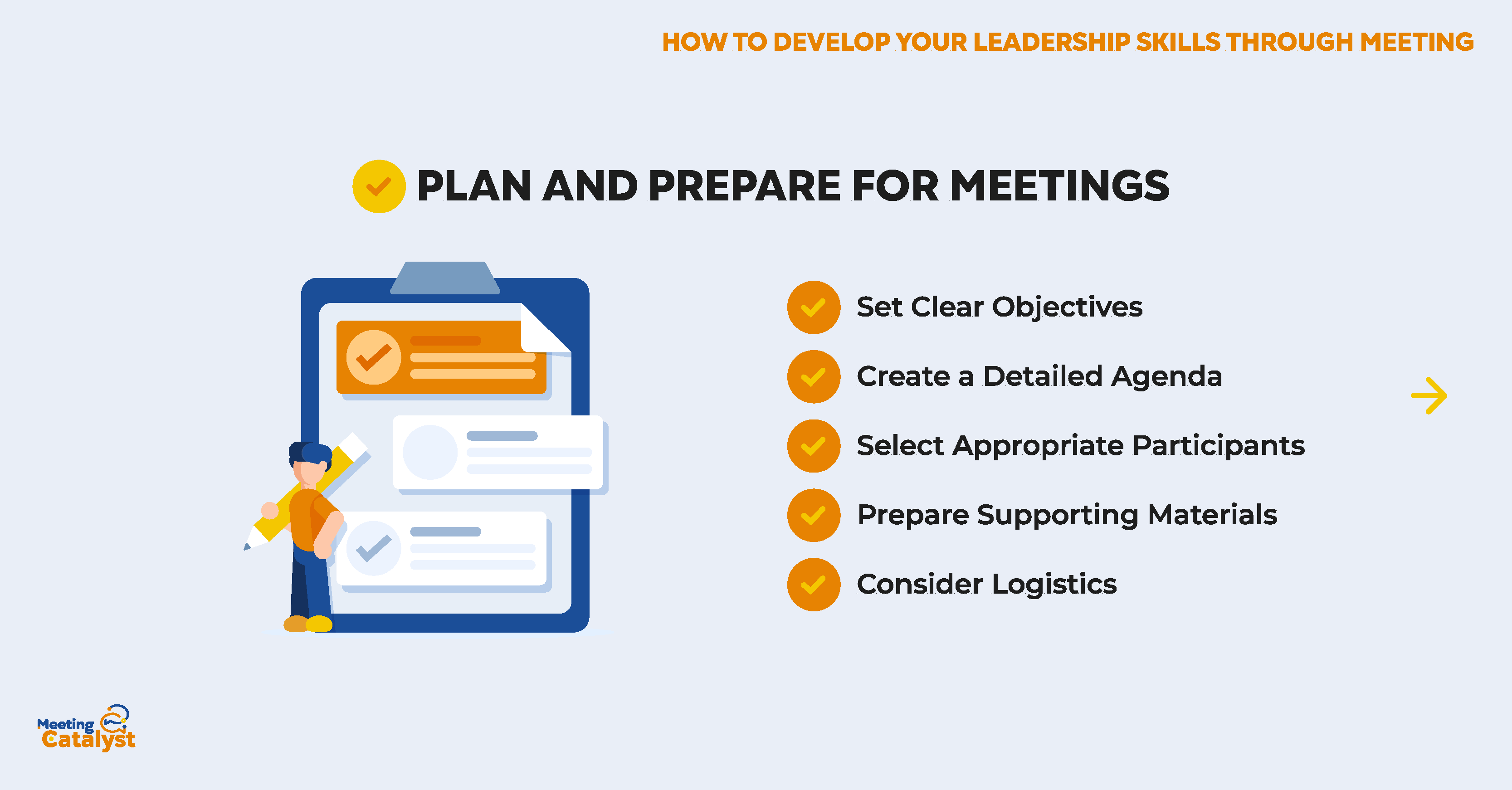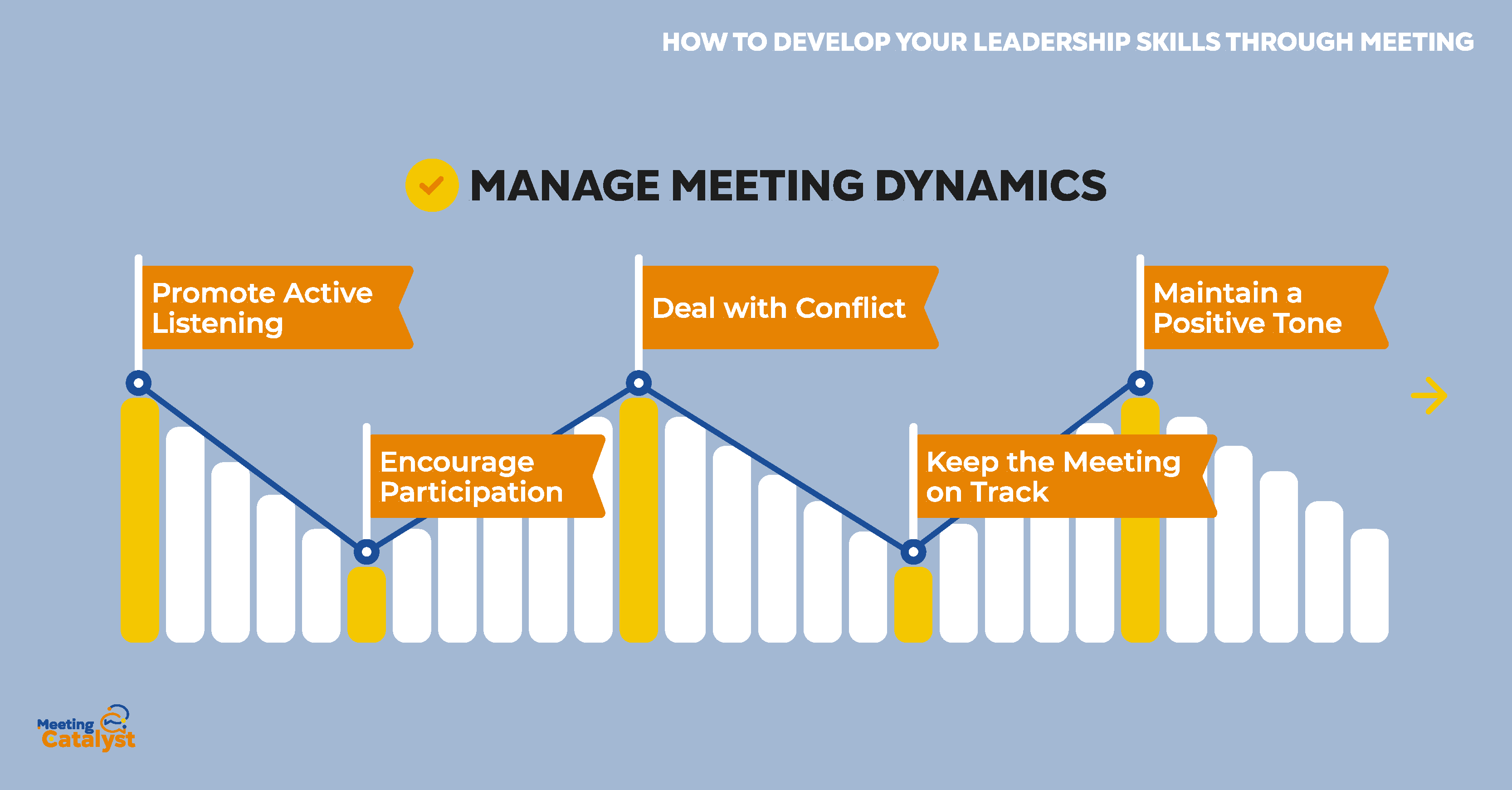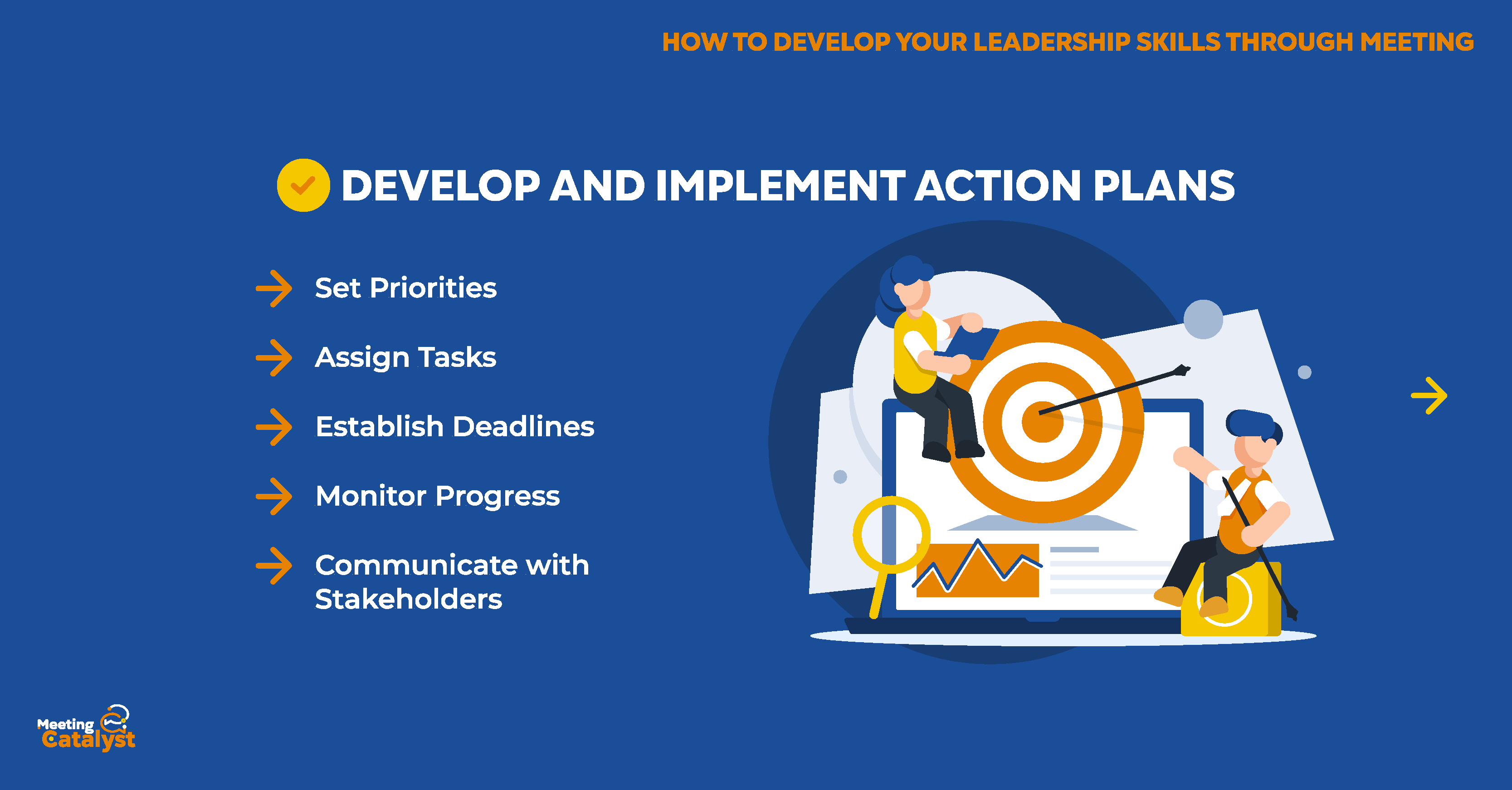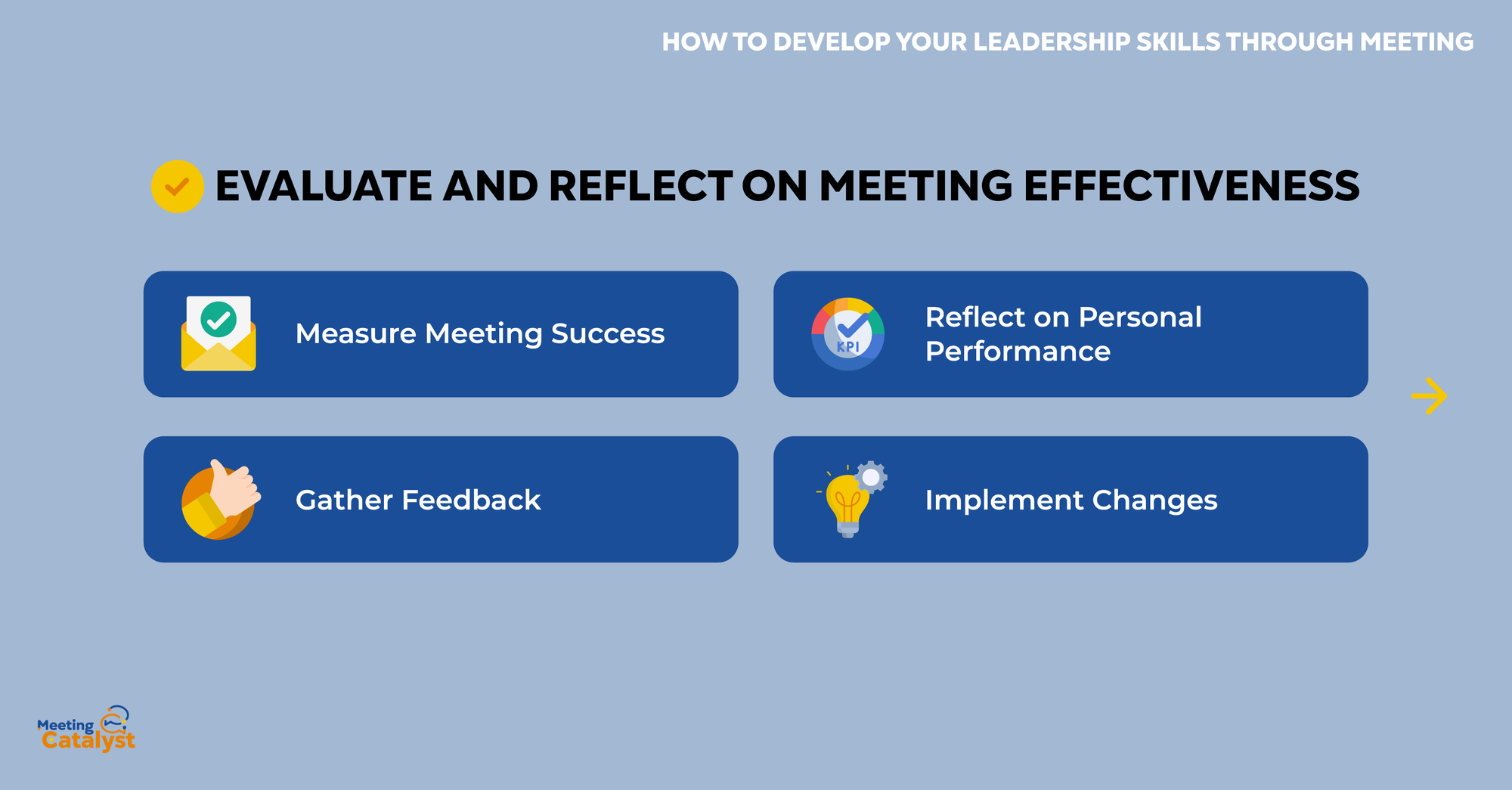How to Develop Your Leadership Skills Through Meetings

Introduction
Leadership skills are crucial for navigating the challenges of today's fast-paced business world. Meetings are an essential aspect of business and team management, and they provide an excellent opportunity for leaders to develop and hone their skills. By understanding the role of meetings in leadership development, you can leverage them to foster better communication, collaboration, and decision-making within your organization.
In this article, we will explore key strategies for developing your leadership skills through meetings, including understanding the different types of meetings, planning and preparation, managing meeting dynamics, developing and implementing action plans, and evaluating and reflecting on meeting effectiveness. By applying these strategies, you can elevate your leadership abilities and drive your team towards greater success.
Let's dive in and discover how meetings can be a powerful platform for enhancing your leadership skills and boosting your team's performance.
Understand the Different Types of Meetings

To leverage meetings for leadership development, it's essential to understand the various types of meetings and their purposes. Different meeting formats can serve specific goals and provide unique opportunities for honing your leadership skills.
Some common types of meetings include:
Information Sharing Meetings: These meetings aim to disseminate information, updates, or announcements to the team. As a leader, you can use these gatherings to practice clear and concise communication, as well as gauge team reactions and address any concerns.
Decision-Making Meetings: The objective of these meetings is to reach a consensus on critical decisions. They offer an opportunity to exercise your problem-solving, negotiation, and consensus-building skills.
Problem-Solving Meetings: These meetings focus on addressing specific challenges or issues. They allow you to practice your analytical, critical thinking, and creative problem-solving abilities.
Team-Building Meetings: These meetings are designed to strengthen team relationships and build trust. Leading these meetings enables you to develop your skills in empathy, active listening, and fostering a positive team culture.
Training or Skill Development Meetings: The goal of these meetings is to enhance the team's knowledge or abilities in a particular area. As a leader, you can use these meetings to demonstrate your expertise, provide guidance, and mentor your team members.
By choosing the appropriate meeting type for your leadership goals, you can create targeted opportunities for skill development. Additionally, understanding the nuances of each meeting format allows you to adapt your leadership style and approach according to the specific context.
Examples of Successful Leadership Development Through Different Types of Meetings
- A manager at a marketing agency uses information sharing meetings to improve her public speaking skills, and she learns to present complex information in a digestible manner for her team.
- A project leader at a software company leverages decision-making meetings to hone his ability to facilitate discussions, ensure all team members are heard, and reach a consensus on critical project decisions.
- A team lead at a design firm utilizes problem-solving meetings to refine her brainstorming and creative thinking skills, leading her team to develop innovative solutions to design challenges.
Plan and Prepare for Meetings

Proper planning and preparation are crucial for effective leadership and meeting management. A well-prepared leader is more likely to command respect, inspire confidence, and achieve meeting objectives. Here are some tips and best practices for planning and preparing for meetings to enhance your leadership skills:
Set Clear Objectives: Clearly define the purpose and desired outcomes of your meeting. This clarity will help you stay focused and ensure that the meeting stays on track.
Create a Detailed Agenda: Develop a comprehensive agenda that outlines the topics to be discussed, the time allocated for each topic, and the expected contributions from participants. Share the agenda with participants in advance to allow them to prepare their thoughts and contributions.
Select Appropriate Participants: Choose the right people for the meeting based on their expertise, decision-making authority, and relevance to the meeting's objectives. This will ensure that your meeting is productive and engages the necessary stakeholders.
Prepare Supporting Materials: Gather any necessary documents, data, or visual aids that will help facilitate the discussion and decision-making process. Ensure that these materials are accessible and easy to understand.
Consider Logistics: Plan the logistics of the meeting, such as the location, duration, and any technology requirements (e.g., video conferencing, presentation equipment). Make sure that all participants have the necessary information and resources to attend and engage in the meeting.
Examples of Successful Meeting Preparation Strategies Used by Other Leaders
- A sales director at a tech company sets clear objectives for her team meetings, outlining specific sales targets and strategies for each quarter. This focus ensures that her team stays on track and works collaboratively towards their goals.
- A CEO at a startup creates detailed agendas for board meetings, assigning time slots for each topic and specifying the contributions expected from board members. This approach allows the board to efficiently address critical business issues and make informed decisions.
- A product manager at an e-commerce company selects appropriate participants for weekly sprint planning meetings, ensuring that all relevant stakeholders are involved in the decision-making process and fostering cross-functional collaboration.
Manage Meeting Dynamics

Mastering the art of managing meeting dynamics is essential for fostering collaboration, communication, and engagement during meetings. As a leader, it is your responsibility to create an environment where everyone feels comfortable sharing their ideas and opinions. Here are some tips to help you manage meeting dynamics effectively:
Promote Active Listening: Encourage participants to actively listen to one another by giving them the floor and minimizing interruptions. This will create an atmosphere of respect and facilitate better understanding among team members.
Encourage Participation: Create opportunities for everyone to contribute by asking open-ended questions, inviting quieter members to share their thoughts, and acknowledging the value of diverse perspectives.
Deal with Conflict: Address conflicts that arise during meetings in a constructive manner. Encourage open dialogue, focus on the issues at hand, and seek mutually beneficial solutions to maintain a positive meeting environment.
Keep the Meeting on Track: Monitor the progress of the meeting and gently steer the discussion back on course if it deviates from the agenda. Use timekeeping techniques to ensure that each topic is given adequate attention.
Maintain a Positive Tone: Set a positive and inclusive tone for the meeting by being approachable, respectful, and supportive. This will create an environment where participants feel comfortable expressing their ideas and collaborating with one another.
Examples of Successful Meeting Management Strategies Used by Other Leaders
A marketing manager at a design agency promotes active listening during brainstorming sessions by implementing a "talking stick" rule, where only the person holding the stick is allowed to speak. This approach ensures that everyone's voice is heard and fosters mutual respect among team members.
A project manager at a software company encourages participation in team meetings by using a round-robin format, where each team member shares updates on their work and any challenges they are facing. This technique ensures that everyone has an opportunity to contribute and feel engaged in the meeting.
A nonprofit director deals with conflict during board meetings by encouraging open dialogue about contentious issues and guiding the conversation towards finding common ground and collaborative solutions.
Develop and Implement Action Plans

Developing and implementing action plans that align with meeting objectives and leadership goals is crucial for turning meeting discussions into tangible results. A well-defined action plan helps keep your team focused and ensures that tasks are completed on time. Here are some strategies to create and execute effective action plans:
Set Priorities: Identify the most important tasks that need to be completed first, and focus your team's efforts on these high-priority items. Clearly communicate the order of importance to your team to keep everyone aligned.
Assign Tasks: Delegate tasks to the appropriate team members based on their skills, expertise, and availability. Encourage team members to take ownership of their assigned tasks and provide support when needed.
Establish Deadlines: Set realistic deadlines for each task to ensure timely completion. Deadlines provide a sense of urgency and help your team stay on track.
Monitor Progress: Regularly check in on the progress of tasks and provide feedback to team members. Address any roadblocks or issues that may be hindering progress, and adjust the action plan as needed.
Communicate with Stakeholders: Keep relevant stakeholders informed about the progress of the action plan. This will help maintain their support and involvement throughout the project.
Examples of Successful Action Planning Strategies Used by Other Leaders
A sales director at a software company sets priorities by creating a color-coded action plan, highlighting the most important tasks in red, followed by less urgent tasks in yellow and green. This visual approach helps the team understand the order of importance and focus their efforts accordingly.
A team leader at a financial services firm assigns tasks using a project management tool that allows team members to see their individual responsibilities, deadlines, and the overall project timeline. This keeps everyone accountable and ensures that tasks are completed on time.
An HR manager at a manufacturing company establishes deadlines by incorporating them into the meeting agenda, ensuring that the entire team is aware of the target completion dates for each action item.
Evaluate and Reflect on Meeting Effectiveness

Evaluating the effectiveness of your meetings and reflecting on your personal performance as a leader is essential for continuous improvement and growth. Here are some tips for measuring meeting success, gathering feedback, and reflecting on your leadership:
Measure Meeting Success: Identify key performance indicators (KPIs) that align with your meeting objectives, such as the number of actionable items generated or the level of participant engagement. Use these KPIs to assess the overall effectiveness of your meetings.
Gather Feedback: Collect feedback from meeting participants through surveys, one-on-one conversations, or anonymous feedback channels. This will help you identify areas for improvement and make necessary adjustments.
Reflect on Personal Performance: Assess your own performance as a leader by considering factors such as your communication, decision-making, and conflict resolution skills. Identify areas where you excel and areas where you can improve, and use this insight to shape your leadership development journey.
Implement Changes: Use the feedback and reflection process to make changes to your meeting practices and leadership approach. Continuously iterate and improve your meetings and leadership skills based on the insights you gain.
Examples of Successful Meeting Evaluation and Reflection Strategies Used by Other Leaders
A marketing manager at a retail company measures meeting success by tracking the number of new marketing campaign ideas generated during brainstorming sessions, and comparing this number against a target goal.
A product manager at a technology firm gathers feedback by sending out a quick post-meeting survey to all participants, asking for their input on the meeting's effectiveness, the clarity of the agenda, and any suggestions for improvement.
A CEO at a startup reflects on personal performance by reviewing meeting recordings and taking notes on their communication style, how they facilitated discussions, and how they managed any conflicts that arose during the meeting.
Conclusion
Developing your leadership skills through meetings is a powerful way to improve both your personal growth and the overall success of your organization. By understanding the different types of meetings, planning and preparing effectively, managing meeting dynamics, developing and implementing action plans, and evaluating and reflecting on meeting effectiveness, you can continuously refine your leadership skills and positively impact your team.
In this article, we have explored various strategies and real-life examples to help you become a more effective leader through meetings:
- Understand the Different Types of Meetings to choose the appropriate format for your leadership goals
- Plan and Prepare for Meetings by setting clear objectives, creating agendas, and selecting the right participants
- Manage Meeting Dynamics to foster collaboration, communication, and engagement
- Develop and Implement Action Plans that align with meeting objectives and leadership goals
- Evaluate and Reflect on Meeting Effectiveness to continuously improve your leadership skills and meeting outcomes
As you embark on your leadership development journey, remember that effective meeting management is an essential component of successful leadership. By implementing these strategies in your own meetings, you'll not only become a better leader but also inspire and empower your team to reach new heights of success.